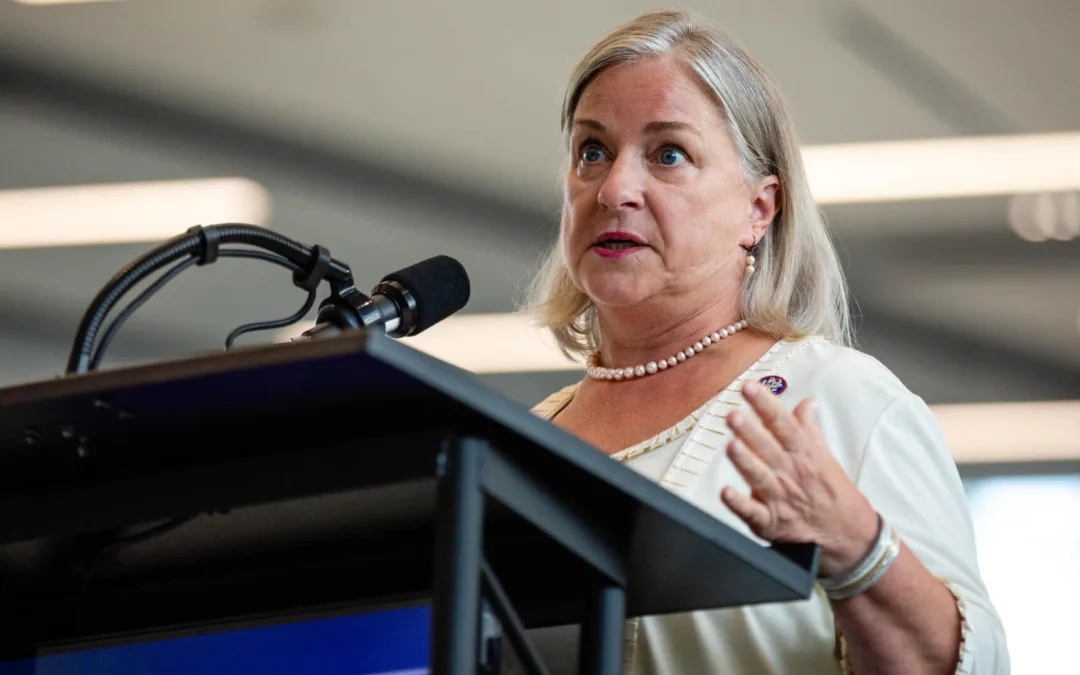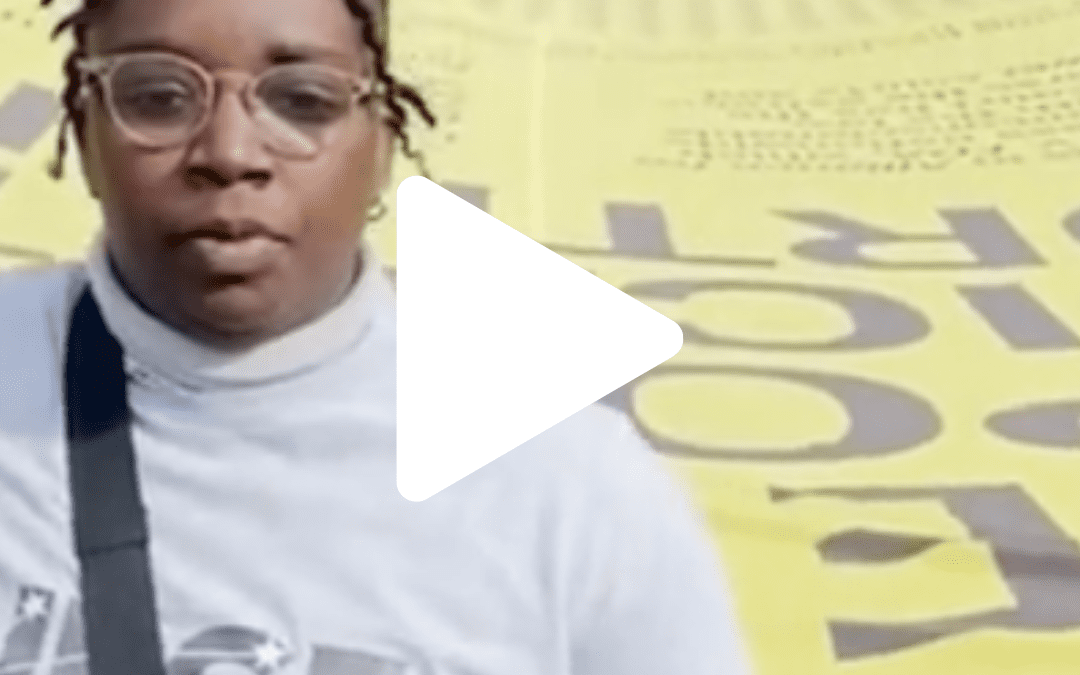
Ciro Cinti died from the coronavirus. His daughter Nina Bocci also caught the virus. (Courtesy of Nina Bocci)
The Coronavirus arrived in Pennsylvania on March 6, 2020.
Nina Bocci pictures The Marine and her mom. She holds the memories of them together in her heart. The holidays and get-togethers. The moments every girl cherishes with her parents. The laughter and the tears from adolescence and young adulthood.
He was sturdy and proud, always there when he was needed, always glowing when he talked about the family he cherished.
The memory that gets her on a Tuesday night between sips of hot chocolate at a café, though, is her mom and a Marine. Not The Marine.
She remembers The Marine’s funeral. It was Monday, Nov. 9. She remembers a small part of her family sitting inside Saints Peter and Paul Church in Plains, just north of Wilkes-Barre. She couldn’t sit too close to the others in the small gathering because she was battling the coronavirus herself.
More people should have been there, but the family had to turn them away because the pandemic was raging. Instead, more than 400 cars drove by Italian Independent Cemetery when the family gathered there later that day.
That day, a then-record 4,344 Pennsylvanians tested positive for the virus.
Each of the three days following the funeral brought a new record for positive cases. The numbers climbed to a peak of 12,815 on Dec. 10.
No one could have imagined those numbers on Nov. 9. All Bocci, 44, could think of at that moment was her father. She watched a Marine in his dress blues hand a perfectly folded American flag to her mother.
Nearly four months later, Bocci thinks that ceremony would have touched her father, Ciro Cinti.
“He was a tough old Italian Marine,” Bocci says.
He was 84 when he got the virus. He was sick for three weeks before it took his life. Had he lived a month longer, The Marine and her mom would have celebrated their 46th wedding anniversary.
Bocci, her mother, her father, and her nephew all got coronavirus in October and November. They’re among the more than 938,000 Pennsylvanians who have contracted the virus since it first arrived in the state a year ago.
Cinti is among the more than 24,151 Pennsylvanians who have died from coronavirus-related causes.
It didn’t have to be this way.
Pennsylvania is Ravaged by the Pandemic
The first two coronavirus cases in the state were recorded on March 6, 2020, one in Wayne County, the other in Delaware County.
Within two weeks, 100 Pennsyvlanians were testing positive a day. The first death, a patient at St. Luke’s Hospital University Hospital-Bethlehem campus in Lehigh County, was recorded on March 18. Another was recorded on March 20. On March 30, 24 deaths were recorded in a single day.
By March 29, officials had recorded cases in 61 of Pennsylvania’s 67 counties. The coronavirus had spread to every county by April 6.

Pennsylvania, the fifth most populous state in the nation, has had the seventh most cases and fifth most deaths, according to data collected by the New York Times.
On March 13, the state shut down schools. On March 19, Gov. Tom Wolf ordered all non-life-sustaining businesses to close for two weeks. He later extended that order.

Wolf’s efforts found resistance from day 1. Some Republican members of the state Legislature battled him, and some county district attorneys and sheriffs said they wouldn’t enforce his executive orders. They were bolstered in their efforts by President Trump, who talked about “opening up by Easter,” refused to wear a mask publicly, and claimed Democratic governors were trying to undermine him.
April and May brought the spring peak of the pandemic, with 6,000 deaths over the two months. Then the numbers dropped during the summer and Wolf allowed businesses to reopen, with restrictions.
In early June, several Lebanon County Republican officials made news when they rallied at a restaurant, flouting Wolf’s mandate. The rally included Republican state Rep. Russ Diamond and state Sen. Doug Mastriano, two of Wolf’s fiercest critics.
As of Tuesday, Lebanon County had the fifth highest incident rate (number of coronavirus cases per 100,000 residents).
Meanwhile, public health officials warned the fall could bring a resurgence. Dr. Rachel Levine, who was then the state Secretary of Health, urged people to continue to mask up, to wash their hands, to stay socially distant.
That resurgence arrived by mid-October, with numbers reaching and slightly exceeding the spring peak.

While April had 42,306 cases, November had more than triple that amount. December saw 281,429 cases and 6,346 coronavirus-related deaths.

December wasn’t all bad news, though.
The Coronavirus Vaccine Arrives in Pennsylvania
Dr. Swathi Gowtham, a pediatric infectious disease expert at Geisinger Health Systems in Northeastern Pennsylvania, remembers the graphs.
“I was tearing up,” she said. She follows other infectious disease doctors on Twitter and she was seeing the results of the trials for the Pfizer and Moderna vaccines. It was clear they were working.
“When we saw that, we were like, ‘Oh, my God, This is amazing,’” she said. “There’s a light at the end of the tunnel.”
The Pfizer vaccine was approved by the FDA on Dec. 11, with the Moderna vaccine following a week later.
Nearly 3 million doses of the vaccine have been administered in Pennsylvania, according to the state and Philadelphia departments of health. As of Tuesday, 1.9 million people had received their first dose of the vaccine. Of those, 860,000 had received their second dose.

The rollout in the state, however, has been far from smooth.
This week, lawmakers criticized the efforts to get seniors vaccinated. Teachers criticized health officials for not initially including them in the earliest phases of vaccinations.Teachers criticized health officials after moving them front of the line while at the same time pushing for schools to be opened.
Since January, the state has received the fifth highest number of doses of vaccines of all the states, but regularly ranked among the lowest in percentage of doses administered.
State health officials have repeatedly said the problem comes directly from not having enough supply to meet the demand.
Help is on the way, with the Johnson & Johnson vaccine set to arrive in the state next week.

Gowtham would like to see the country learn one thing from this experience.
“The bad thing is the lack of trust in science,” she said. She admits that information changed early on. But that’s the natural process with science, especially when dealing with a new virus.
People should understand that as new information comes out, we have to adapt, Gowtham said.
She’s not the only one who wants people to follow the science.
One Patient’s Experience with the Virus
“Just wear the damn mask,” Bocci said.
She thinks about her dad, The Marine. And she thinks about what she went through.
Even though she’s never had any serious prior health issues, Bocci ended up spending six days in the hospital.
It was a brutal experience that included hallucinations. She was so short of breath, it looked like she had a tic when she talked. Her 103-degree fever lasted for three days.
The staff covered her in ice, and she ended up on Remdisivir.
Four months later, she still has issues. She has to catch her breath when walking up the stairs. She’s lost some hair. She has to take calcium supplements to protect her nails and teeth, though she has never had a cavity before.
But Bocci has hope. She’s been vaccinated. She “jumped on it” as soon as the opportunity arrived.
She’s also glad that she has an advocate in the White House.
On Jan. 19, the day before his inauguration, President Joe Biden held a ceremony in commemoration of the 400,000 Americans who died from coronavirus-related complications. The National Mall and Lincoln Memorial were covered in flags and lights.
“That meant a lot,” she said. “To have someone show that level of compassion.”
Biden ended up holding another, brief memorial the next month because the nation had already surpassed 500,000 deaths.
“This is 500,000 names,” she said. “That’s an incredible amount of empathy.”

For Rep. Susan Wild, supporting PA families includes reproductive rights and much more
Rep. Susan Wild wants to be very clear with Pennsylvanians: Donald Trump is committed to taking away women’s reproductive freedom, but he is not...

School districts working with anti-LGBTQ groups can cost your kids’ schools millions
Parents across South Central Pennsylvania are worried about the potential financial impacts working with anti-LGBTQ groups may have on their school...

VIDEO: Trump distances himself from his anti-abortion views
Donald Trump appeared on WGAL on Tuesday and continued to distance himself from his anti-abortion views claiming that reproductive rights are now a...

VIDEO: Community pushback gets school board to rescind decision on denying gay actor’s visit
Cumberland Valley School Board offered a public apology and voted to reinstate Maulik Pancholy as a guest speaker a week after the board voted to...

VIDEO: Project 2025 brings nuclear armageddon back into vogue
Project 2025 is a titanic document, with plans ranging from cutting half of all government employees to targeting reproductive rights on a scale...



